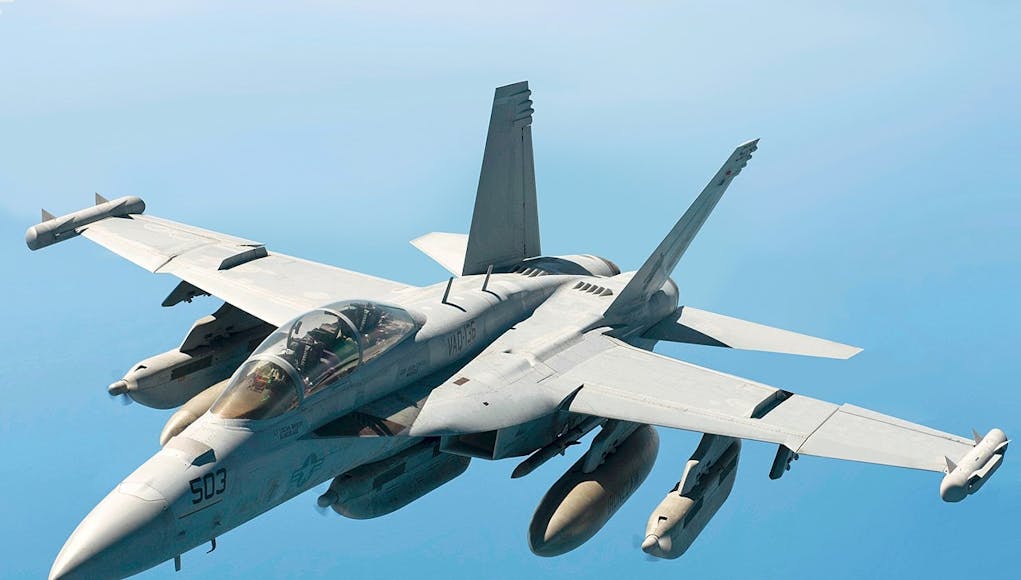The test proved the ability of F/A-18 Super Hornet and EA-18G Growler pilots to remotely control other aircraft from their own cockpit.
The flights, conducted during the US Navy Warfare Development Command’s annual fleet experiment (FLEX) exercises, proved the effectiveness of technology allowing F/A-18 Super Hornets and EA-18G Growlers to perform combat missions with unmanned systems.
“This demonstration allows Boeing and the Navy the opportunity to analyze the data collected and decide where to make investments in future technologies,” said Tom Brandt, Boeing Manned-UnManned Teaming demonstration lead.
“It could provide synergy with other U.S. Navy unmanned systems in development across the spectrum and in other services.”
Over the course of four flights, 21 demonstration missions were completed say Boeing.
“This technology allows the Navy to extend the reach of sensors while keeping manned aircraft out of harm’s way,” Brandt said in a Boeing news release.
“It’s a force multiplier that enables a single aircrew to control multiple aircraft without greatly increasing workload. It has the potential to increase survivability as well as situational awareness.”














Adding the two innovative flow control technologies from Magma on to Taranis would give us a truly world-class UAV.
No doubt this tec will be included in the future development of Tempest.
https://www.youtube.com/watch?v=dI-pz8KhBdA
Yes agree, However, it would also need a 2D exhaust. This would definitely help its yaw and pitch control, leaving roll to the forced air. Something similar to the Raptors exhaust would be a good place to start.
In your opinion, would it not be better if it was able to direct it’s thrust in all directions, (pitch,yaw and roll) 3D thrust vectoring?
This might help with future take-off and landing on the QE carriers.
When I saw this on the front page I wondered why it had a picture of an F18…..
I assume this is just to test the tech. We need UAVs at 5 or 6 figure sums not old kit at 7 or 8 figure sums.
Yeah its just about validating communications and having remote controls inside a fighter. Its not really practical to use them in this way during actual combat.
Having radio control shouldn’t be all that hard I assume the real problem is keeping the connection secure so that it can’t be used against you?
Yes, if you use Link-16 from its normal antenna, it is omni-directional. For covert comms you really need a directional antenna. Even short burst transmission can be detected if your kit is time sensitive enough. The way forward is what’s used by the F35. It uses a phased array for its multi-functional advanced data-link. This means the transmission can be transmitted using a pencil thin beam. So unless you get between the transmitter and receiver you won’t detect the transmission.
Also rapidly modulate it across several frequencies making it harder to lock on to.
Hope for the best but prepare for the worse. UAVs are great until someone hacks them & turns them against you.